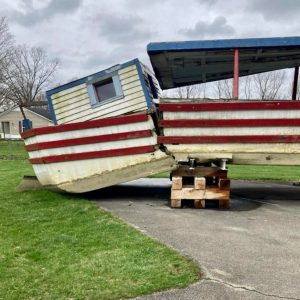
METAMORA, IN — The Indiana State Museum and Historic Sites are working to come up with a plan to revive the Whitewater Canal Historic Site in Metamora, and relaunch the Ben Franklin III Canal Boat.
The Ben Franklin III (pictured) fell apart last week while being transported to the administration building for its five-year inspection.
It had been in operation since 1989 and was used to give visitors to Metamora a feel for canal life, but the boat has not operated since the end of the 2019 season.
The Whitewater Canal Historic Site was created in 1946.
Four components have been identified for a major capital investment project that would revive and continue the Whitewater Canal Historic Site’s legacy.
The Indiana State Museum hopes to purchase a new boat for $1 million and embark on a $6.6 million project that would repair the aqueduct, the waterwheel, and two locks at the historic site.
The costs break down as follows:
- The Duck Creek Aqueduct, a National Historic Landmark and the only historic covered aqueduct of its kind still in existence, will cost $4 million for repairs and reinforcements to help prevent damage in case of severe flooding on Duck Creek.
- Lock 24 – located by the horse barn – will cost $1.4 million to repair. This lock is essential to keeping water in the canal, and it is also the place where a boat would be drydocked. Due to the pressure from the surrounding earth, the canal wall must be removed, reinforced, and reconstructed. In addition, the lock doors are inoperable and need to be replaced.
- Lock 25 – located by the mill – will cost $1.2 million to repair. In addition to the current work to replace the waterwheel, the site needs wall repairs, stone masonry work, and repairs to the stone steps, wood steps, and guardrails.
- The waterwheel will cost $250,000 to build and install.
The next step in the process is to work with civil engineers, the DNR Division of Historic Preservation and Archaeology, state museum and historic sites board members, and the Governor’s office to determine a long-term, sustainable strategy based on current information.



